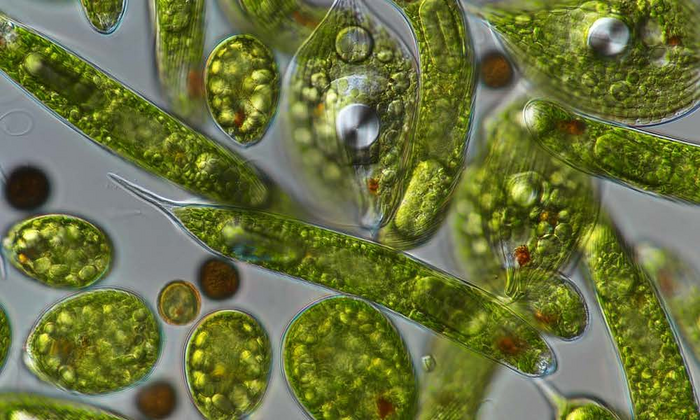The Euglena International Network (EIN) (https://euglenanetwork.org/), founded in 2020, is a global consortium of hundreds of scientists around the world with the collective goal of supporting euglenoid science through collaborative and integrative omics between academics and industry.

Credit: Photo credit: Bożena Zakryś / University of Warsaw, Poland. EIN photo contest winner 2021
The Euglena International Network (EIN) (https://euglenanetwork.org/), founded in 2020, is a global consortium of hundreds of scientists around the world with the collective goal of supporting euglenoid science through collaborative and integrative omics between academics and industry.
The EIN has today published a position paper in Biology Open, outlining the case for a concerted effort to generate high quality reference genomes for the nearly 1,000 known species of euglenoids.
Euglenoids are part of the protist group, home to eukaryotic organisms that do not fit into animal, plant, or fungi groups. These diverse single-celled organisms are found in an exceptionally wide range of ecosystems around the world.
Multiple euglenoid species have translational applications, showing great promise in the production of biofuels, nutraceuticals, bioremediation, cancer treatments, and even as robotics design simulators.
Their enormous potential has been largely untapped due to a lack of high-quality reference genomes.
Euglenoid genomes present a particular sequencing challenge because they are an example of secondary endosymbiosis – housing mitochondria, chloroplasts, and remnants of genetic material from organisms they enveloped to acquire these organelles.
Their enormous potential has been largely untapped due to a lack of high-quality reference genomes.
Euglenoid genomes present a particular sequencing challenge because they are an example of secondary endosymbiosis – housing mitochondria, chloroplasts, and remnants of genetic material from organisms they enveloped to acquire these organelles.
As a result, fewer than 20 species have been explored at any level for translational potential through genomics. The EIN believes the time is right to address this.
Through generating high quality reference genomes for the known species of euglenoids, the EIN will work to:
– Understand the basic biology of euglenoids
– Understand the evolution of euglenoids
– Maximise euglenoid applications in ecological and environmental management
– Explore, translate, and commercialise euglenoid products
Data collected by the EIN will be openly available to the scientific community through the European Nucleotide Archive (ENA). Once in ENA, annotated genomes can be imported into resources such as Ensembl Protists and presented in a uniform and FAIR way to research communities.
Dr. ThankGod Echezona Ebenezer, Founding President of EIN and a Bioinformatician at the European Bioinformatics Institute (EMBL-EBI), UK, said: “The Euglena International Network will play a crucial role in helping to assemble specialists on euglenoids to increase our understanding of euglenoids biology and its translational applications. This could be useful to furthering our understanding of the evolution of parasitism, social gaming, developing jet fuels, or supporting human space exploration”.
Professor Neil Hall, Chair of the EIN Science Committee and Director of the Earlham Institute, said: “It’s incredibly rare to find an organism so versatile it has potential roles in food production, biofuel generation, robotic engineering, and drug development – and there are many more applications possible. Producing reference genomes is the first step to understanding these remarkable organisms so we can realise their biotechnological potential.”
Dr. Masami Nakazawa, member of the EIN Science Committee and a Senior Lecturer at Osaka Metropolitan University, Japan, said: “The EIN has boosted collaborations in the euglenoid community where I am already involved in exciting projects regarding energy metabolism. Elucidating unexplored features of euglenoids including genomic information will contribute to human welfare through biotechnology in addition to basic science.”
Dr. Anna Karnkowska, member of the EIN Science Committee and Assistant Professor at the University of Warsaw, Poland, said: “The unique genomic features and presence of secondary plastids in Euglenoids make them a crucial group for understanding the evolution of eukaryotes and their endosymbiotic organelles. Genomic data are essential for elucidating the evolutionary history of Euglenoids and designing experiments to explore their biology further”.
Dr. Eric W. Linton, member of the EIN Science Committee, Past-President of the Phycological Society of America (PSA), and Professor at Central Michigan University, USA, said: “The genomic information that we do have for euglenoids shows their genomes and resulting biochemical / metabolic pathways, in many cases, are made up of genes from various sources such as bacteria, red and green algae. This chimera of a genome can give us rare insights into genome evolution, organization and regulation.”
The Euglena International Network is an affiliated network to the Earth BioGenome Project and the International Society of Protistologists.
Journal
Biology Open
DOI
10.1242/bio.059561
Method of Research
News article
Subject of Research
Not applicable
Article Title
Euglena International Network (EIN): Driving euglenoid biotechnology for the benefit of a challenged world
Article Publication Date
22-Nov-2022




